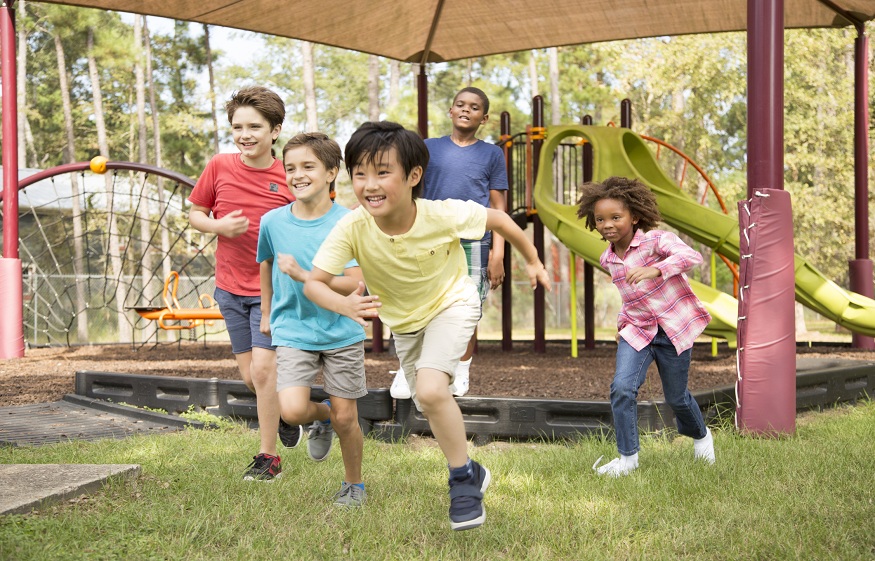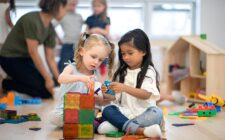Have you ever noticed how a walk in the park or a hike in the woods can improve your mood and increase your productivity? Well, what if we told you that bringing natural playground equipment into schools could have the same effect on students? That’s right – there is mounting evidence to suggest that incorporating elements of nature into educational settings can boost children’s cognitive function, creativity, and overall well-being. So buckle up and get ready to discover The Power of Natural Playground Equipment: Boosting Student Productivity!
Introduction to Natural Playground Equipment
An increasing number of schools are turning to natural playground equipment to encourage student productivity and creativity. Natural playgrounds allow children to explore and play in a stimulating environment that is designed to promote learning.
Natural playgrounds can include features such as sand pits, water tables, climbing structures, and garden areas. This type of playground encourages children to use their imaginations and engage in physical activity.
Research has shown that natural playgrounds can have a positive impact on child development. One study found that children who played in natural playgrounds had better social skills than those who did not. Other research has shown that natural playgrounds can improve cognitive development, increase physical activity levels, and reduce stress levels.
The benefits of natural playgrounds are clear. If you are considering adding this type of playground to your school, there are a few things you should keep in mind. First, it is important to choose a location that is safe and away from traffic. Second, the playground should be designed with input from students, teachers, and parents. And finally, the playground should be well-maintained so that it can continue to provide a stimulating environment for learning and play.
Benefits of Natural Playground Equipment in Education
There are many benefits of natural playground equipment in education. One benefit is that it can help to boost student productivity. Studies have shown that students who have access to natural playground equipment are more likely to be engaged and motivated in their learning. Additionally, natural playgrounds have been found to promote social and emotional development, physical activity, and creativity. All of these benefits can lead to increased academic achievement.
Another benefit of natural playground equipment is that it can promote a love of learning in students. When students are able to play and explore in a safe and stimulating environment, they are more likely to develop a positive attitude towards learning. This positive attitude can then carry over into the classroom, where students will be more likely to participate and engage with the material.
Natural playgrounds can provide an opportunity for students to bond with their peers. Social interactions and teamwork are an important part of child development, and natural playgrounds offer a perfect setting for this to occur. Through play, children learn how to cooperate with others and resolve conflicts. These skills are essential for success in school and in life.
Case Studies Showing Success of Natural Playground Equipment
There is a growing body of evidence that suggests natural playgrounds can have a positive impact on student productivity. Anecdotally, many teachers report that their students are more engaged and focused after spending time in a natural playground. And there are several studies that support these claims.
One study, conducted by the University of Texas at Austin, found that children who had access to nature-based play structures were more likely to engage in cooperative play and to show increased social and emotional skills. Another study, conducted by the University of Illinois at Urbana-Champaign, found that students who had access to natural playgrounds had better fine motor skills and were more likely to engage in active play.
These studies suggest that natural playgrounds can have a positive impact on student productivity. However, it is important to note that not all natural playgrounds are created equal. The type of equipment and the layout of the playground can make a big difference in how well it meets the needs of students.
How to Implement Natural Playground Equipment in Schools
Natural playground equipment can provide a number of benefits for schools, including boosting student productivity. Here are some tips on how to implement natural playground equipment in schools:
- Choose the right location. When selecting a location for natural playground equipment, consider factors such as sun exposure, proximity to classrooms, and noise level.
- Make sure to select playground equipment that is appropriate for the age group of students who will be using it.
- Incorporating features such as trees, bushes, and rocks into the playground design can create a more natural environment for play.
- Promote safety. Be sure to promote safe play by incorporating features such as fall surfaces and perimeter fencing.
Cost Analysis for Different Types of Natural Playground Equipment
There are many different types of natural playground equipment available, and the cost of each type can vary significantly. Here is a cost analysis for some of the most popular types of natural playground equipment:
Wooden playground equipment: Wooden playground equipment is typically very durable and long-lasting. However, it can be quite expensive to purchase and install.
Concrete playground equipment: Concrete playground equipment is usually less expensive than wooden playground equipment. However, it is not as durable and may need to be replaced more often.
Rubberized flooring: Rubberized flooring is a popular choice for natural playgrounds because it is soft and safe for children to play on. It can be somewhat expensive to install, but it will last for many years with proper care.
Conclusion
Natural playground equipment provides numerous benefits to students, such as increased physical activity, improved cognitive skills and social development. By encouraging outdoor play, natural playgrounds can enhance student creativity and provide a stimulating environment for learning. With the right planning and implementation of natural elements into existing structures or within new designs, schools can greatly benefit from installing natural playgrounds while also providing an enjoyable atmosphere for children to learn and grow in.




